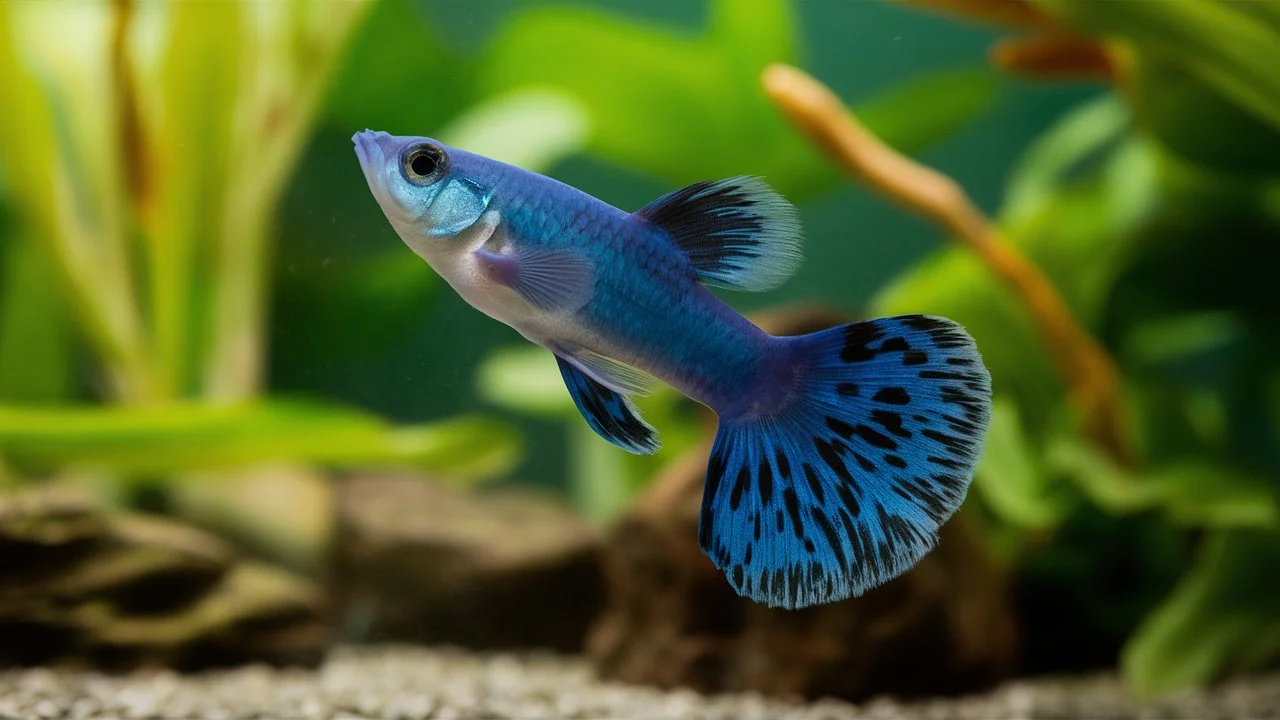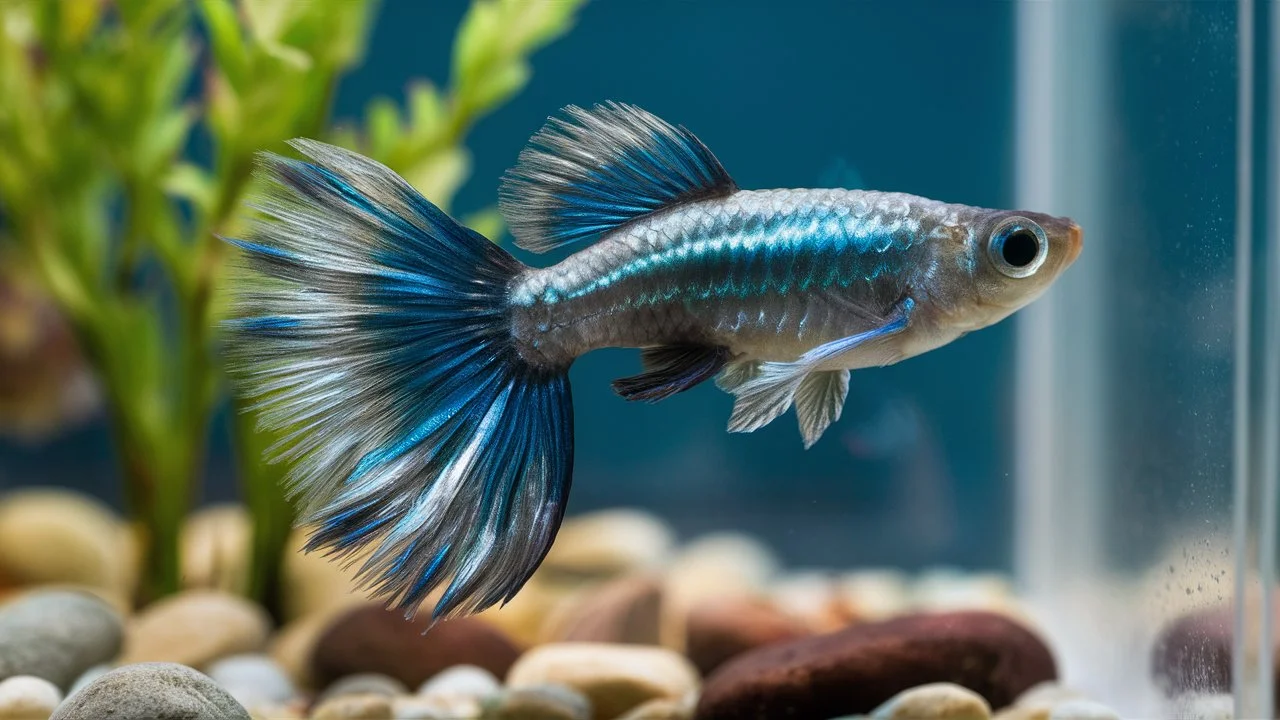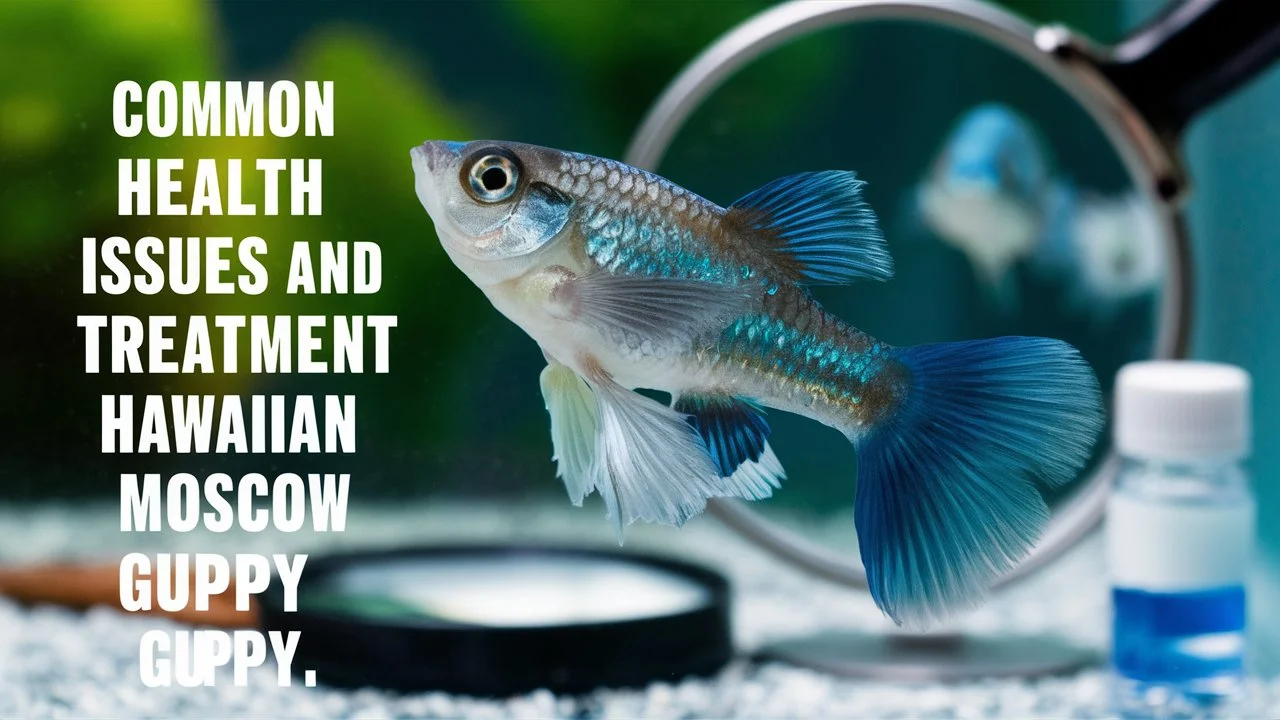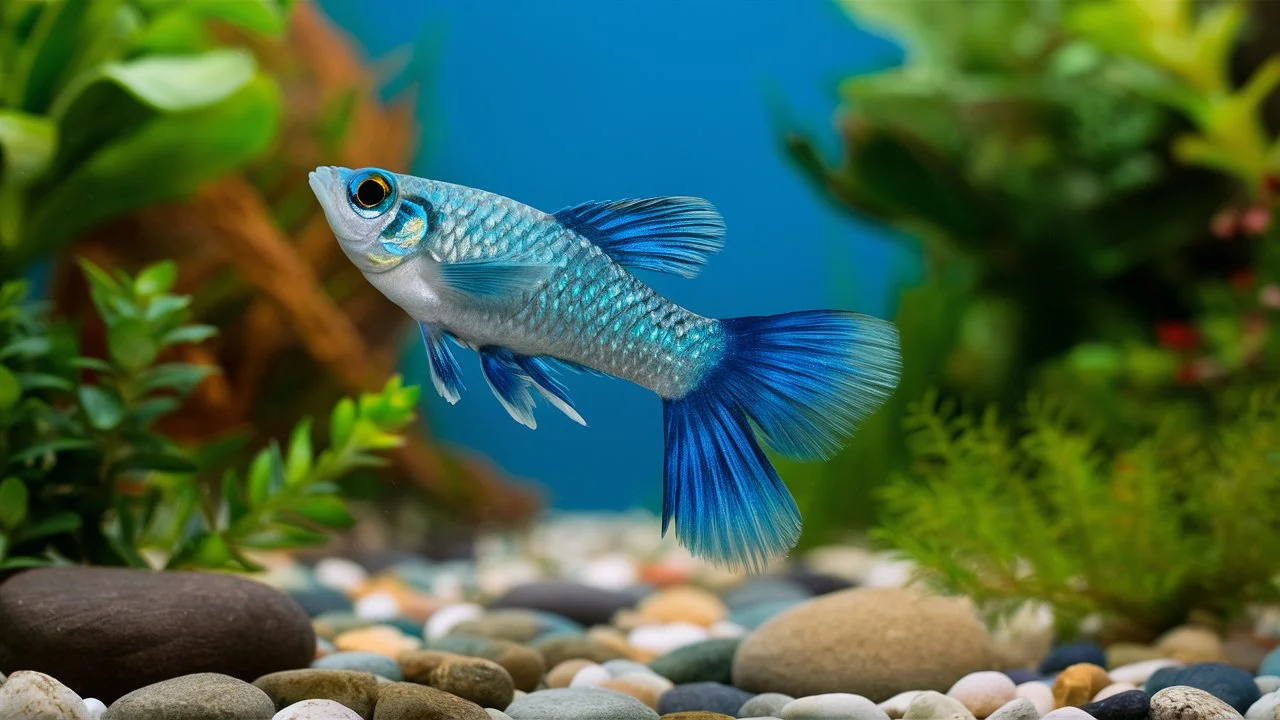The Hawaiian Blue Moscow Guppy is a beautiful and colorful fish. It is a popular choice for fish tanks because of its bright blue color and lively personality. This small fish is easy to care for and can live in both freshwater and saltwater environments.
Its stunning blue scales make it a standout in any aquarium, adding a touch of tropical beauty. Whether you are a beginner or an experienced fish keeper the Hawaiian Blue Moscow Guppy is a wonderful addition to your underwater world.
The Hawaiian Blue Moscow Guppy typically costs between $5 to $15 each and lives for about 2 to 3 years. They thrive on a diet of fish flakes, brine shrimp and bloodworms. These guppies are easy to breed with females giving birth to many live young. They are generally healthy but clean water and a proper diet are essential. Regular tank maintenance helps prevent common fish diseases, ensuring they stay vibrant and lively in your aquarium
Table of Contents
ToggleHow Much Does A Hawaiian Blue Moscow Guppy Cost?
The Hawaiian Blue Moscow Guppy typically costs between $5 and $15 each. These beautiful fish are affordable and make a great addition to any aquarium.

Cost in Different Countries (in USD):
- USA: In the United States, Hawaiian Blue Moscow Guppies are usually priced between $5 and $15 each, depending on the seller and the fish’s size and coloration.
- UK: In the United Kingdom, these guppies are sold for about $6 to $18 each, reflecting conversion rates and import costs.
- Canada: In Canada, the cost ranges from $5 to $15 each, similar to the prices in the USA.
- Australia: In Australia, you can find these guppies for around $5 to $15 each, though prices can vary slightly based on availability and local demand.
- India: In India, Hawaiian Blue Moscow Guppies are priced between $3 and $8 each, making them more affordable due to lower local pricing and currency differences.
These prices may vary depending on factors such as the quality of the fish, the seller, and regional availability. Always check with local sellers for the most accurate pricing in your area.
Related reading: Blue Moscow Guppy Cost: Lifespan, food, Breeding & Health
How Long Do Hawaiian Blue Moscow Guppies Live?
Hawaiian Blue Moscow Guppies usually live for about 2 to 3 years. This lifespan can vary based on the quality of care they receive, including their environment, diet and overall health management.
Factors Affecting Lifespan
- Water Quality: Clean water is very important. Dirty water can make guppies sick and shorten their lifespan. Poor water quality can lead to stress and diseases, significantly reducing their lifespan. It’s important to monitor water parameters regularly and ensure that the water is free from toxins and harmful substances.
- Diet: A balanced and varied diet is essential for the health and longevity of Hawaiian Blue Moscow Guppies. They thrive on a mix of fish flakes, brine shrimp and bloodworms. Providing them with high-quality food helps them stay healthy and live longer.
- Tank Conditions: Proper tank conditions are vital for the well-being of guppies. They need enough space to swim freely, as well as a well-maintained tank environment with appropriate filtration, aeration and temperature control.

Tips to Help Guppies Live Longer
- Regular Water Changes: Performing regular water changes is essential to keep the tank environment clean and healthy. It helps remove waste, excess nutrients and harmful substances that can accumulate over time.
- Balanced Diet: Providing a varied and balanced diet ensures that guppies receive all the necessary nutrients for their growth and health. A mix of fish flakes, brine shrimp, and bloodworms can help meet their dietary needs.
- Proper Tank Maintenance: Regularly cleaning the tank, checking the filtration system and maintaining the correct water temperature are important steps to prevent diseases and ensure a healthy environment for guppies.
By paying attention to these factors and providing good care, you can help your Hawaiian Blue Moscow Guppies live a happy and healthy life for up to 3 years. Ensuring a clean environment, proper diet and regular maintenance will contribute to their well-being and longevity.
How Often Can Hawaiian Blue Moscow Guppies Have Babies?
Female guppies can have babies every 4 to 6 weeks. This means that in a year, a single female guppy can give birth to many baby guppies. The number of babies each time can be between 20 and 50.
Breeding Cycle of Guppies
Guppies are livebearers, which means they give birth to live baby fish instead of laying eggs. The female guppy can become pregnant quickly after mating with a male guppy.
Signs of Pregnancy
It’s easy to tell when a female guppy is pregnant. Here are some signs:
- A bigger belly that gets rounder as she gets closer to giving birth.
- A dark spot near her tail called a gravid spot.
- She may become less active and eat more.
Preparing for Birth
As the time to give birth gets closer, you should make sure the tank is safe for the baby guppies. You can use a breeding box or add lots of plants to the tank. This helps protect the baby guppies from being eaten by other fish, including their own mother.
Caring for Baby Guppies
Once the babies are born, they need special care. Here are some tips:
- Feed them small, crushed fish food several times a day.
- Keep the water clean and at the right temperature.
- Make sure they have hiding places to stay safe.
Common Health Issues and Treatment of Hawaiian Blue Moscow Guppy
Hawaiian Blue Moscow Guppies are known for their striking colors and energetic behavior. However, like all aquarium fish, they can face health issues. Knowing the common problems and how to treat them can help ensure your guppies live healthy, happy lives.

1. Ich (White Spot Disease)
Symptoms:
- Tiny white spots on the body and fins.
- Rubbing against objects.
- Labored breathing and clamped fins.
Treatment:
- Increase the tank temperature gradually to 82°F (28°C).
- Use over-the-counter ich treatments, following the instructions carefully.
- Maintain good water quality by performing regular water changes.
2. Fin Rot
Symptoms:
- Frayed or disintegrating fins.
- Red or bloody edges on the fins.
Treatment:
- Improve water quality by doing frequent water changes.
- Use antibacterial medications specifically designed for fin rot.
- Ensure the tank is free from sharp objects that can damage fins.
3. Swim Bladder Disorder
Symptoms:
- Difficulty swimming or staying upright.
- Floating at the surface or sinking to the bottom.
Treatment:
- Fast the affected fish for 24-48 hours.
- Feed them cooked, deshelled peas to help clear the digestive tract.
- Maintain a varied diet to prevent future issues.
4. Fungal Infections
Symptoms:
- Cotton-like growths on the body or fins.
- Discolored patches.
Treatment:
- Use antifungal treatments available at pet stores.
- Isolate the affected fish to prevent the spread of the infection.
- Keep the tank clean and perform regular water changes.
5. Velvet Disease
Symptoms:
- Golden or rusty dust on the body.
- Scratching against objects.
- Rapid gill movement.
Treatment:
- Dim the tank lights as the parasite thrives in light.
- Use copper-based medications to treat the disease.
- Increase the water temperature slightly.
6. Columnaris
Symptoms:
- White or grayish spots on the mouth, edges of scales, and fins.
- Frayed fins and ulcers.
Treatment:
- Use antibacterial medications designed for fish.
- Improve water quality with regular water changes.
- Isolate infected fish to prevent spreading.
7. Parasites
Symptoms:
- Visible worms or flukes on the skin or gills.
- Rubbing against objects and labored breathing.
Treatment:
- Use antiparasitic medications available at pet stores.
- Quarantine new fish before adding them to the main tank.
- Maintain a clean tank environment.
8. Dropsy
Symptoms:
- Swollen body with raised scales (pinecone appearance).
- Lethargy and loss of appetite.
Treatment:
- Isolate the affected fish immediately.
- Use antibacterial medications, although treatment success varies.
- Maintain excellent water quality and a healthy diet to prevent occurrence.
Prevention Tips
- Maintain Water Quality: Regular water changes and proper filtration are crucial.
- Healthy Diet: Feed your guppies a varied and balanced diet to boost their immune system.
- Quarantine New Fish: Always quarantine new fish for at least two weeks before introducing them to the main tank.
- Avoid Overcrowding: Overcrowding can lead to stress and disease. Keep the tank population at a manageable level.
- Regular Monitoring: Keep an eye on your guppies for any signs of illness and act quickly if you notice any symptoms.
Conclusion
Hawaiian Blue Moscow Guppies are an affordable and vibrant addition to any aquarium, living between 1 to 3 years with proper care. They thrive on a balanced diet of high-quality flake food and occasional live or frozen treats. Known for their prolific breeding, females can produce 20 to 50 fry every 4 to 6 weeks. While they are generally hardy, guppies can suffer from common health issues like ich and fin rot, which can be prevented with good water quality and prompt treatment. Overall, these guppies are a rewarding choice for both novice and experienced aquarists.

1 thought on “Hawaiian Blue moscow guppy Cost: Lifespan, food, Breeding & Health”